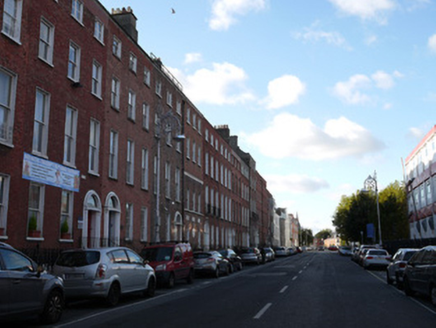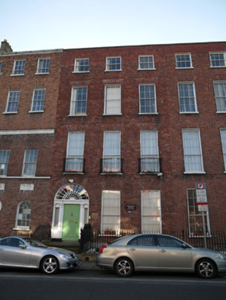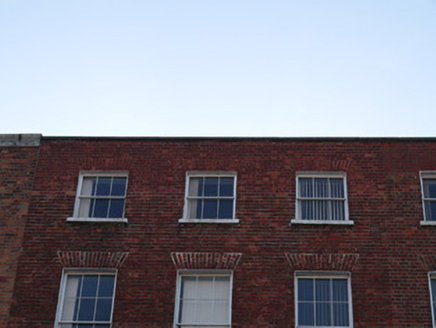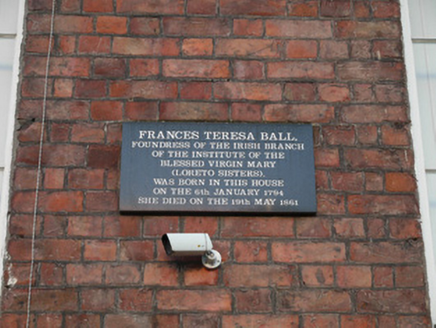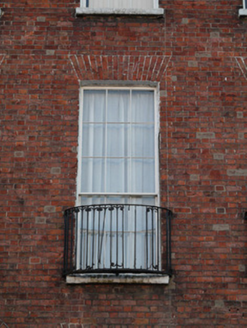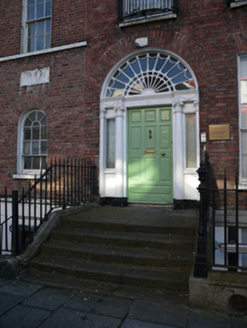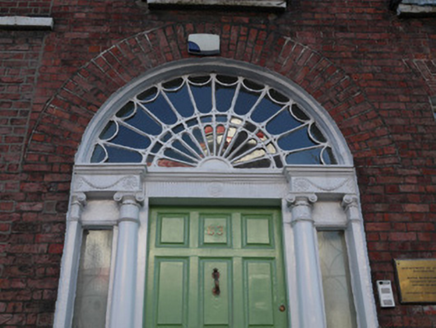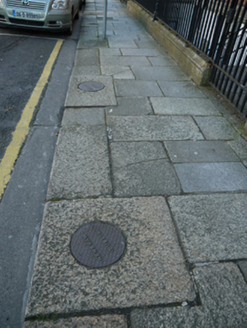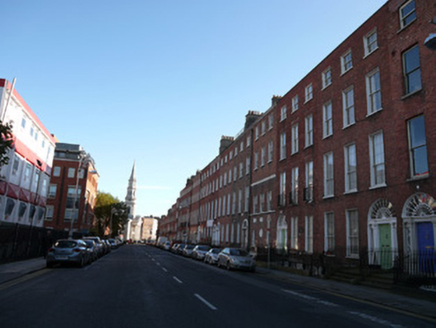Survey Data
Reg No
50070472
Rating
Regional
Categories of Special Interest
Architectural, Artistic, Historical, Social
Original Use
House
In Use As
Surgery/clinic
Date
1780 - 1800
Coordinates
315502, 235571
Date Recorded
27/10/2012
Date Updated
--/--/--
Description
Terraced three-bay four-storey over basement former house, built c.1790, now in use as clinic. M-profile pitched roof, hipped to east end, having parapet with granite capping to front (north) elevation. Red brick walls laid in Flemish bond. Cut granite plinth course over rendered walls to basement. Limestone plaque between ground floor windows noting the birth place of Frances Teresa Ball in 1794. Square-headed window openings having patent reveals and granite sills. Remains of wrought-iron balconettes to first floor windows. Painted cut granite surrounds to basement windows. Timber sash windows, three-over-three panes to third floor, nine-over-six panes to ground and first floors, six-over six panes to basement and second floor. Round-arched door opening having painted masonry surround with engaged Ionic columns and respondent pilasters supporting fluted frieze with garlands. Cobweb fanlight, wired-glass sidelights. Timber panelled door. Granite steps to entrance platform. Cast-iron railings on granite plinth to steps. Basement area shared with 62 Eccles Street, enclosed from pavement having recent metal gate. Recent paved stairs to basement area. Cast-iron coal-hole covers set in granite pavement to front of house.
Appraisal
This well proportioned house makes an important contribution to the streetscape. It shares characteristics with neighbouring buildings including window arrangements and door surrounds resulting in a coherent terrace. Its elaborate Ionic door surround survives in good condition and is typical of door surrounds fashionable in Dublin during the late Georgian period. Frances Teresa Ball, foundress of the Irish branch of the Institute of the Blessed Virgin Mary (Loreto Sisters) was born in the house in 1794, not long after its construction. Eccles Street was laid out in 1772 by the Gardiner Estate. It was to be an arterial route leading to Gardiner's ambitious yet unrealised Royal Circus, planned for the north-west end of Eccles Street. The south side of the street is an impressive, almost entirely, late eighteenth-century terrace with taller buildings to the centre of the terrace.
